For behind its starkly white and windowless facade lies a new vision of the future of housing in Ireland. It is not only stylish and comfortable, but it also generates most of the energy it requires from an array of unseen solar panels on the roof (which also power an electric car).
Architect Mel Reynolds, who has gained a reputation for his informed views on how to solve the housing crisis, wanted to do something radically different when it came to building a flexible three bed mews to the rear of the Victorian three-storey family home which he shares with his wife Louise and their four teenage children.
“I wanted to see if we could get as close to being carbon-neutral at no extra cost,” he says.
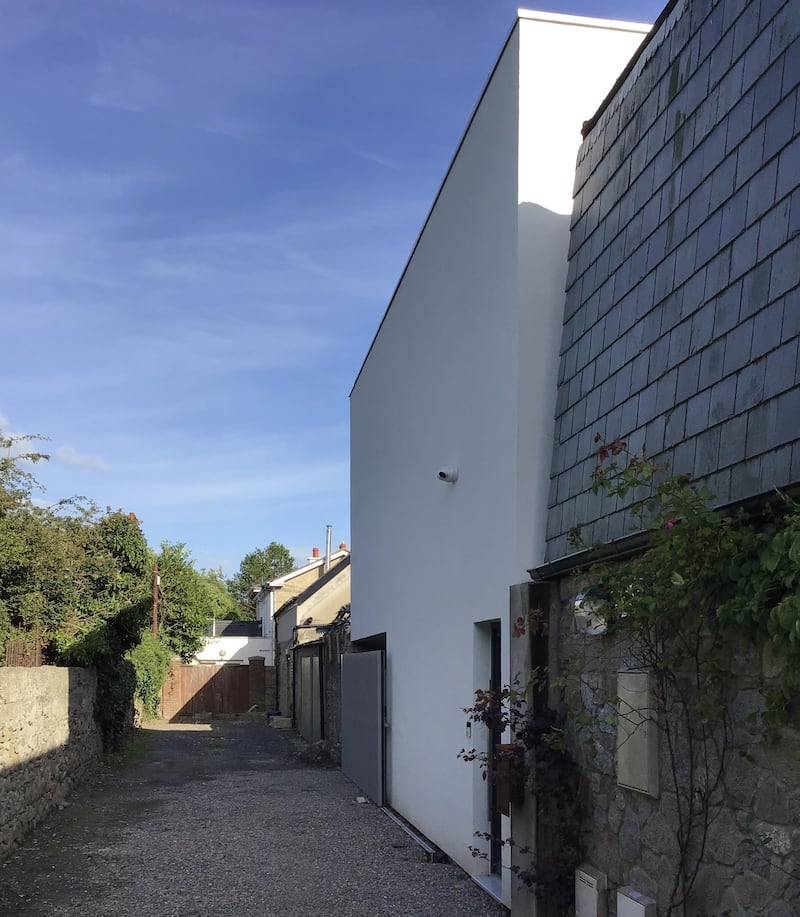
And so he has completed a 120sq m mews for marginally more than the cost of a standard A-rated semi-detached house. What’s clever about the property is that its layout can be readily reconfigured for all sorts of living needs. Two of the double bedrooms allow for subdivision into two single rooms, so it can readily convert to a five bed (master plus four singles).
In its current configuration the mews has five bedrooms, two bathrooms, a double-height entrance hall at ground level, and a large open-plan living room, kitchen and dining area upstairs. This opens out to a secluded south-facing roof terrace with five acacia trees in tubs and a luxuriant “living wall”.
The terrace is paved with a platform of large-format ceramic tiles (identical to those inside) which are self-draining. All rainwater is “harvested” for toilets, showers, kitchen sink, etc – a “win-win scenario” in Reynolds’ view, since these account for the vast bulk of domestic water consumption. “If this was the norm Irish Water wouldn’t need to spend €1 billion on a pipeline to bring water from the river Shannon to Dublin.”
An almost imperceptible air intake duct draws fresh air into the house and feeds it into a Pichler "combi unit" (for both air and water) in a storage cabinet at ground level. It pre-heats the air and delivers it at 22 degrees for the living room and 17 degrees for the bedrooms, paired with a boiler to provide hot water for showers and the kitchen sink, which features one of those magic Quooker taps that provides constant boiling water.

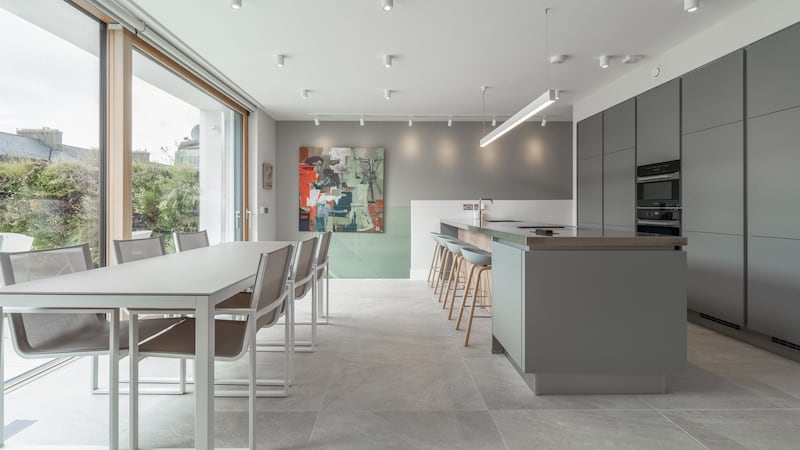
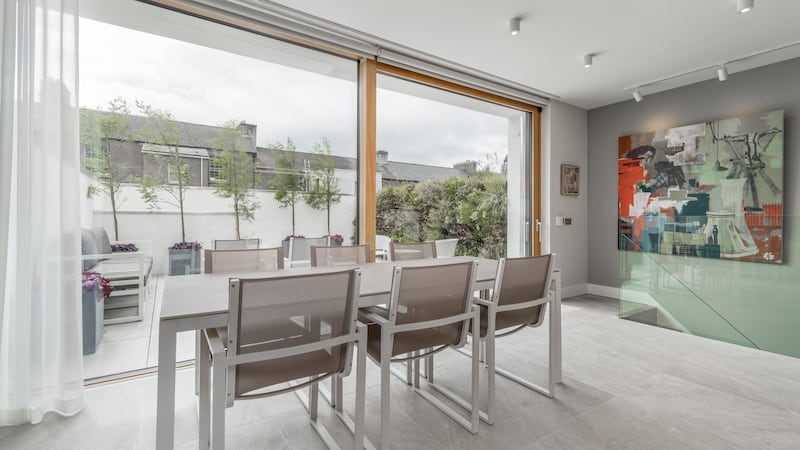
Yet Reynolds found he couldn't get a loan from his bank to fund construction of the house. Meanwhile money from mezzanine financiers would have been prohibitively expensive with an interest rate of up to 18 per cent – "like building off your credit card". Instead he ended up going to Property Bridges, which provides a peer-to-peer service to raise money from investors for housing projects; a bit like crowd-funding, in effect.
Well insulated
“There’s no really advanced Star Wars stuff going on here,” Reynolds says as we tour Cove Mews. “It’s very well insulated and doesn’t need a primary heating system, because the PV [photovoltaic] array supplies enough electricity for hot water and space heating. So you don’t need radiators in every room – and that saves €15,000 straight off, compared to an average house.”
Reynolds had completed a training course on passive house design and read lots of literature on the subject. Originally developed in Germany, the "passivhaus" concept seeks to reduce the ecological footprint of housing by making it much more energy-efficient, using devices such as solar panels, wind turbines, geothermal energy, external insulation, triple-glazed windows and mechanical heat-recovery ventilation.
In Ireland this technology was pioneered by the Green Building in Temple Bar, designed by Murray O'Laoire Architects in collaboration with Tim Cooper, then director of buildings at Trinity College, and completed in 1994 – a year before the United Nations held its first climate change summit in Berlin.
Although wind turbines on the Green Building’s roof had to be dispensed with because they were causing vibrations in the two penthouse apartments, incredibly its original array of photovoltaic (PV) panels is still generating the same amount of electricity more than 25 years later – helping to reduce substantially the energy bills for those who live in this highly-innovative building.
It didn’t catch on, however, and Ireland continued to build standard housing that was – and still is – notoriously wasteful of energy. That’s about to change, with a firm commitment by the coalition Government to embark on an “ambitious retrofitting programme to make our buildings warmer and more energy-efficient”, upgrading at least 500,000 homes to a still pretty low B2 energy rating by 2030.
Micro-generation
This wasn't anything near enough for Reynolds, who reckons that Cove Mews would qualify not just for an A1 BER rating but actually "A Zero" in energy consumption terms. Indeed, it could feed electricity back into the grid in high summer "if ESB Networks seriously promoted micro-generation", he says. "That really needs to be sorted out."
As it is the 7-kilowatt solar array reduces home energy costs by a staggering 70 per cent to just €300 per year, while the surplus it generates powers his VW electric car for 10,000km for just €93 per year – around a tenth of the annual fuel costs for an equivalent diesel car.
Equally impressive is that combined carbon emissions are nearly five times lower than for those of a standard A-rated house and diesel car.
All of the technical details about the energy performance of Cove Mews will be featured in the next issue of Passive House Plus magazine, whose editor Jeff Colley has been to the fore in promoting the technology.
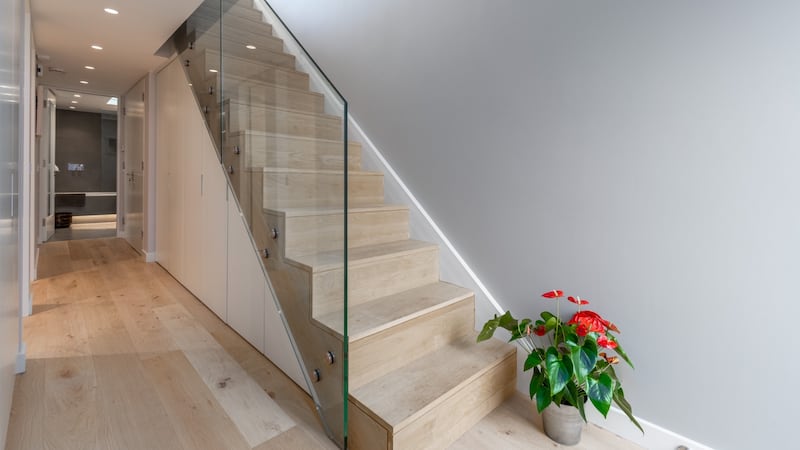
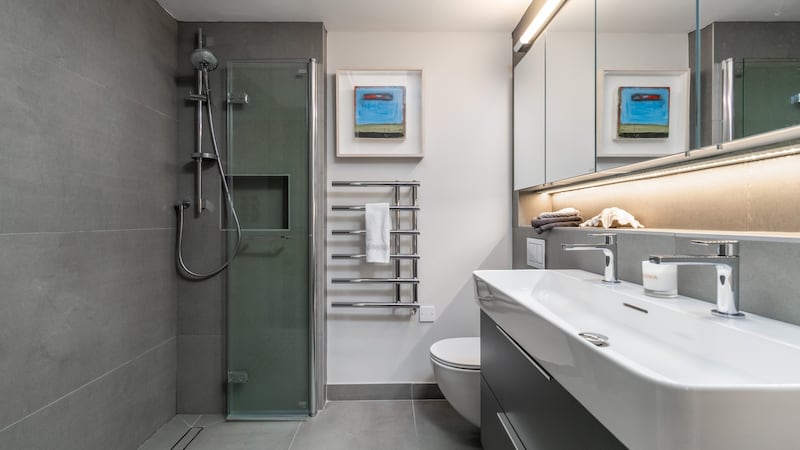

“It’s the most sophisticated example I’ve ever seen,” says Tim Cooper, who advised Mel Reynolds on his project. “The spectacular low consumption is as good as you can get anywhere.”
Architecturally there are some lovely details – a glass balustrade on the internal beech staircase, a recessed aluminium handrail on the external stairs (also aluminium, and surprisingly non-slip even when it’s wet) and a rainwater chain rather than an ugly downpipe. And despite being compact, there is plenty of storage space as well as a sleek minimalist kitchen with its own breakfast bar.
Internal walls
Reynolds now plans to sell Cove Mews and then go on to do similar projects on other back-lane sites. Whoever buys it will have the option of rearranging the lower level as the internal walls come with “soft spots” that could be opened up to create door openings or a very large ‘suite’ of rooms, more suited to a downsizer couple. Reynolds has also incorporated another ‘soft spot’ in the floor above which is framed and wired for a wheelchair lift, allowing for anyone who is disabled to easily convert the layout to make the upper floor accessible
The property’s only drawback is the blank facade it presents to the laneway, relieved only by the entrance door and a sliding aluminium gate for the car port, owing to local residents’ concerns that their properties would be overlooked. However, the addition of a long horizontal slit window could bring north light into the living room, and offer a glimpse of Sandycove’s storied Martello tower in the distance.















